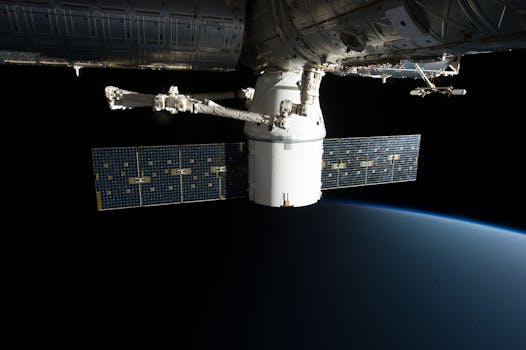
Satellites as Sentries: Advanced Technologies for Global Communication and Surveillance
Satellites as Sentries: Advanced Technologies for Global Communication and Surveillance have become an integral part of modern life, providing critical services such as navigation, communication, and weather forecasting. The use of satellites for global communication and surveillance has revolutionized the way we interact with each other and the world around us. With the development of advanced technologies, satellites have become even more sophisticated, enabling real-time communication, high-resolution imaging, and precise navigation.
History of Satellite Development
The first satellite, Sputnik 1, was launched by the Soviet Union in 1957, marking the beginning of the space age. Since then, thousands of satellites have been launched into orbit, with each subsequent generation offering improved capabilities and performance. The development of satellite technologies has been driven by the need for global communication, navigation, and surveillance. Today, satellites are used in a wide range of applications, including telecommunications, weather forecasting, Earth observation, and military operations.
Advanced Satellite Technologies
Recent advancements in satellite technologies have enabled the development of more sophisticated and capable satellites. Some of the key technologies driving this trend include advanced materials, propulsion systems, and sensors. For example, the use of lightweight materials such as carbon fiber and aluminum has enabled the construction of larger and more complex satellites. Additionally, the development of high-efficiency propulsion systems such as ion engines and Hall effect thrusters has improved satellite maneuverability and reduced fuel consumption. Furthermore, the use of advanced sensors such as synthetic aperture radar and hyperspectral imagers has enabled satellites to capture high-resolution images and data, even in adverse weather conditions.
Applications of Satellites
Satellites have a wide range of applications, including global communication, navigation, weather forecasting, Earth observation, and military operations. In the field of global communication, satellites provide critical services such as television broadcasting, telecommunications, and internet connectivity. Navigation systems such as GPS and GLONASS rely on satellites to provide location information and timing signals. Weather forecasting satellites such as Geostationary Operational Environmental Satellite (GOES) and Polar-orbiting Operational Environmental Satellite (POES) provide critical data on weather patterns and storms. Earth observation satellites such as Landsat and MODIS provide valuable data on land use, land cover, and climate change. Military operations also rely heavily on satellites for communication, navigation, and surveillance.
Conclusion
In conclusion, Satellites as Sentries: Advanced Technologies for Global Communication and Surveillance have become an essential part of modern life, providing critical services such as navigation, communication, and weather forecasting. With the development of advanced technologies, satellites have become even more sophisticated, enabling real-time communication, high-resolution imaging, and precise navigation. As the demand for satellite services continues to grow, it is likely that we will see even more advanced technologies developed in the future, further expanding the capabilities of satellites and their role in global communication and surveillance.

